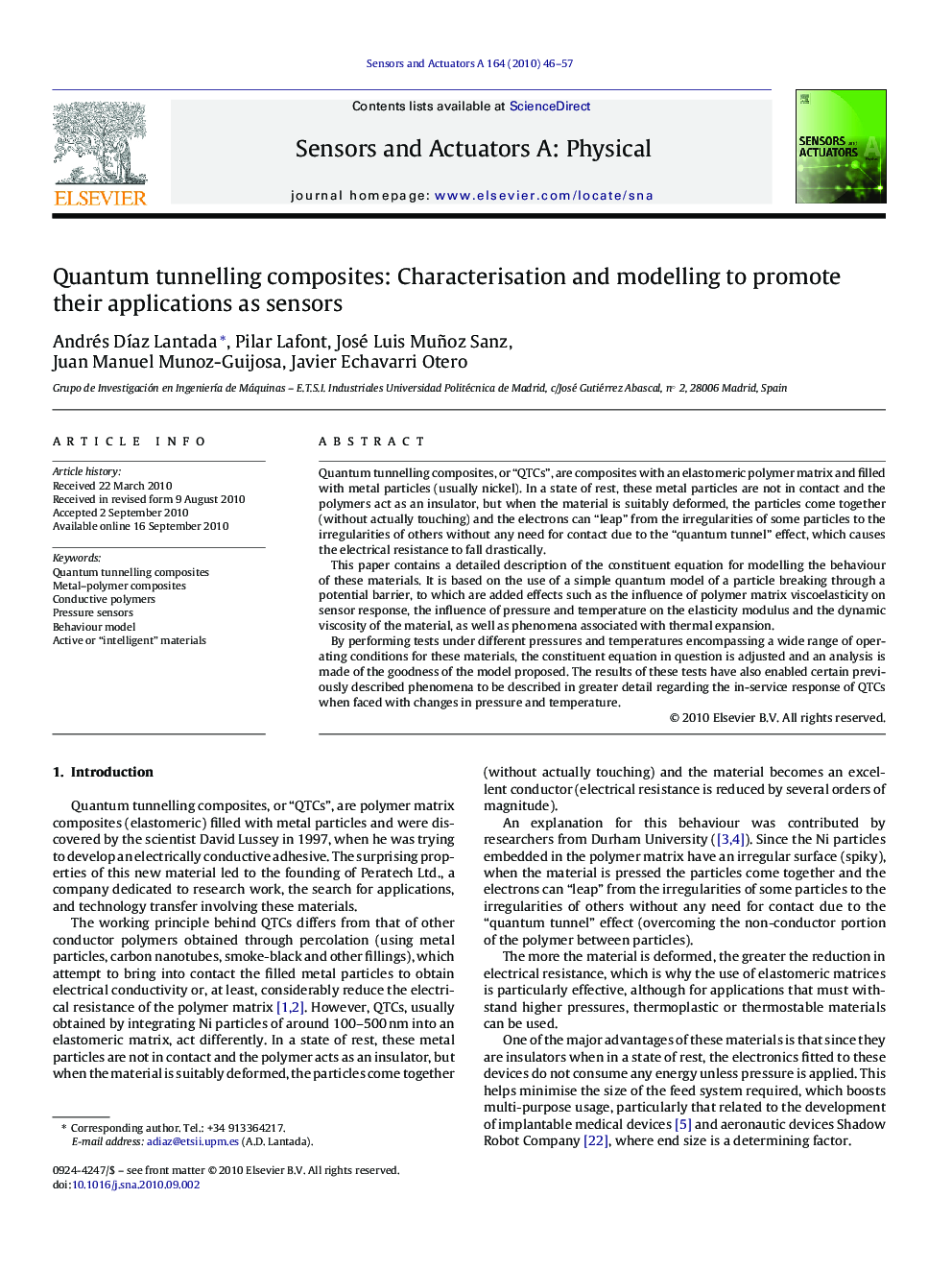| کد مقاله | کد نشریه | سال انتشار | مقاله انگلیسی | نسخه تمام متن |
|---|---|---|---|---|
| 737721 | 1461928 | 2010 | 12 صفحه PDF | دانلود رایگان |

Quantum tunnelling composites, or “QTCs”, are composites with an elastomeric polymer matrix and filled with metal particles (usually nickel). In a state of rest, these metal particles are not in contact and the polymers act as an insulator, but when the material is suitably deformed, the particles come together (without actually touching) and the electrons can “leap” from the irregularities of some particles to the irregularities of others without any need for contact due to the “quantum tunnel” effect, which causes the electrical resistance to fall drastically.This paper contains a detailed description of the constituent equation for modelling the behaviour of these materials. It is based on the use of a simple quantum model of a particle breaking through a potential barrier, to which are added effects such as the influence of polymer matrix viscoelasticity on sensor response, the influence of pressure and temperature on the elasticity modulus and the dynamic viscosity of the material, as well as phenomena associated with thermal expansion.By performing tests under different pressures and temperatures encompassing a wide range of operating conditions for these materials, the constituent equation in question is adjusted and an analysis is made of the goodness of the model proposed. The results of these tests have also enabled certain previously described phenomena to be described in greater detail regarding the in-service response of QTCs when faced with changes in pressure and temperature.
Journal: Sensors and Actuators A: Physical - Volume 164, Issues 1–2, November–December 2010, Pages 46–57